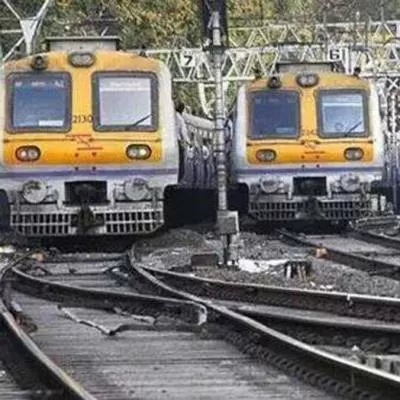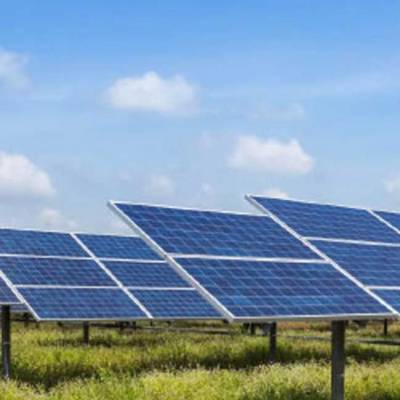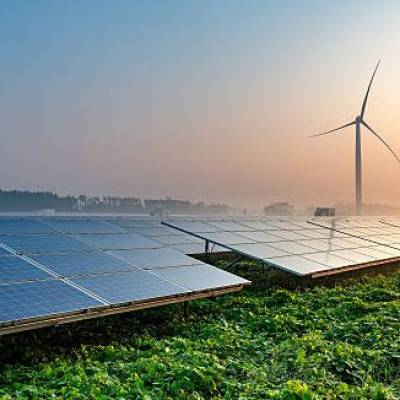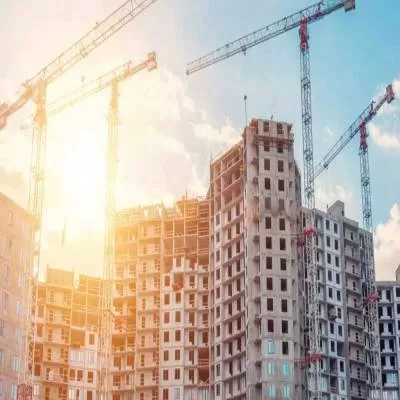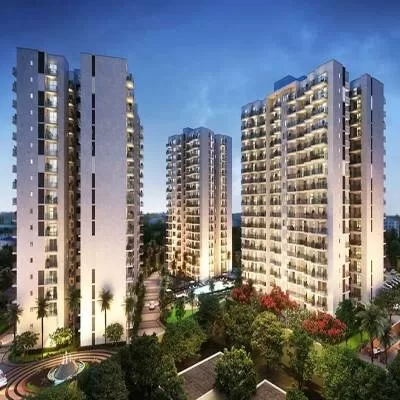- Home
- Real Estate
- Conditioned for Success

Conditioned for Success
Things are heating up in certain segments of the HVAC market. ´We´re seeing 18-20 per cent growth in the residential and commercial segments of the HVAC market, albeit not so much in the industrial sector,´ says A Ravi, President-Ishrae Thane Chapter, Head Marketing (Projects Business), Domestic Projects Group, Voltas Ltd.
As a result, leading players have positive expectations for the current fiscal. ´We are targeting growth of around 20 per cent this financial year. We are looking at doubling our current capacity of 500,000 units per annum, increasing the number of our solution plazas from around 200 to 350, and increasing our dealer network from 2,600 to 3,500 by March 2016,´ shares Kanwaljeet Jawa, Managing Director, Daikin India.
Upcoming opportunities
Market sentiment is expected to stay strong with big opportunities ahead. ´By 2030, 300 million air-conditioners (ACs) will be installed; 70 per cent of that installation is yet to happen, and so huge scope exists,´ observes Jawa.
Residential Tier-I and Tier-II cities are expected to fuel the next wave of growth. Daikin India has major plans to make inroads in non-metro India.´This year, 60 per cent of our revenue will come from the residential segment and 40 per cent from the commercial segment,´ adds Jawa. ´At present, 40 per cent of sales of our residential segment is coming from non-metro places where there is spendable money and people want to live in comfort. We expect this to increase. Also, the government´s 100 Smart City projects is a big upcoming opportunity; we are in touch with leading consultants involved with specifying the norms for that.´
Inverter compressor technology
Inverter compressor technology is the latest buzzword in the AC market. ´We are seeing a shift towards inverter compressor technology in the residential air-conditioning segment. Split air-conditioners with inverter compressor technology are 40 per cent more energy-efficient than split models using fixed speed compressors.
Besides, inverter compressors use eco-friendly refrigerants,´ opines Mohamed Ibadullah, Country Head-VRF, ETA General Pvt Ltd.
ôInverter AC is an emerging technology,´ says Jawa. ´It currently accounts for 9-10 per cent of the Indian market.´ Inverter ACs can save 64 per cent energy compared to fixed-speed ACs, according to him.
Transitioning to VRF technology
In medium to big projects, variable refrigerant flow (VRF) air-conditioners are the latest trend as these can cut down on the number of outdoor units, observes Ibadullah. ´So far, VRF units can connect up to 54 indoor units and the range is increasing. VRF-based air-conditioners are space saving and highly energy-efficient, which is a big advantage for hotels, hospitals, high-rise residences and luxury villas. Also, VRF outdoor units can be connected to different types of indoor units like cassette units, ductable split units and wall mounted split units - this flexibility offers more options to interior designers and architects.´
According to Ravi, the transition to VRF systems is most prominent in the IT and ITES, commercial buildings, retail, and hospitality segments. ´However, this growth is happening at the cost of other HVAC options such as packaged units, ductable split units and smaller chiller plants.´
´Knowledgeable customers are choosing VRF systems for lowering power consumption, flexibility in sizing and operations, occupying less space, using environment-friendly refrigerants, and lowering capital costs compared to chiller-based solutions,´ he adds.
Trends in controllers
Closely allied to air-conditioning units are HVAC controlling systems. In this, one of the biggest trends is the shift to smart technology, particularly for systems based upon central command units operable by a single remote, spanning cooling and heating as well as lighting and alarms, according to Thanik B, Director Strategy & Business Development-Buildings Business, Schneider Electric India.
Greater product awareness
Today´s consumers are more aware about energy-efficiency and environment-friendly products; they shop for these parameters and compare brands on them, says Ravi.
Growing consciousness about energy-efficient buildings has boosted demand for five-star rated HVAC systems and VRF systems, says Thanik. Today, the aim is to meet the heating and cooling needs of the building with extreme efficiency and precision. ´Product reliability and after-sales service also attract customers,´ he adds.
Eco-friendly refrigerants
Daikin India ACs use R-32 refrigerant to additionally reduce the condenser side energy need by 10 per cent. R-32, a hydro fluorocarbon also known as HFC-32, has helped Daikin India drive sales of its line-up of residential ACs.
´The Indian market responded very well to our environment-friendly refrigerant using ACs; R-32 is more energy-efficient, has zero ozone depleting potential and has one-third the global warming potential (GWP) of other refrigerants R-410a and almost one-third as R-22,´ says Jawa.
Strategies for growth
To boost sales of energy-saving inverter ACs, Daikin has a low-price strategy in place, an outcome of achieving about 50 per cent localisation.
´Local sourcing has helped us cut nearly 30-35 per cent of costs,´ says Jawa. Offering low-cost products is a winning strategy in the price-sensitive Indian market, even in the premium inverter AC market whose buyers are more conscious about energy-efficiency than cost. The cost of an inverter AC is higher by Rs 4,000 to Rs 5,000, but Jawa says users can recover that money within one year.
Possibly, make in India, make for India, may be Daikin India´s strategy to fuel further growth.
´We have identified a part of our Neemrana factory to set up an R&D centre, to come up with ACs meant specifically for the Indian market. We will be spending Rs 100 crore for the purpose,´ says Jawa.
Surely, this trend is a sign of better times.
Quick Bytes
Market sentiment expected to stay strong with big opportunities ahead.
Residential Tier-I and Tier-II cities expected to fuel next wave of growth.
Inverter AC is an emerging technology.
Trends: VRF ACs in medium to big projects; shift to smart technology in controlling systems.
HVAC choices for green buildings
Reducing energy consumption and providing optimal interiors from the perspective of occupant productivity level and health are the focus of HVAC in green buildings. As buildings achieve green ratings based on installed technologies and products, HVAC consultants should choose technologies that improve upon Energy Conservation Building Codes (ECBC) and Indian and American Society of Heating, Refrigerating and Air Conditioning Engineers (ASHRAE) prescribed minimum standards, says CG Krishnan, Director, LEAD Consultancy & Engineering Services (India) Pvt Ltd.
For instance, a typical commercial building with a built-up area of 875,000 sq ft aspiring for a Gold rating might need to install one 700 TR water-cooled centrifugal chiller and five 350 TR air-cooled screw chillers, with a minimum COP of 6.1 and 2.8 respectively as per ASHRAE. Proposing the use of high-efficiency chillers with COP 6.53 and 3.2 respectively would enhance energy-efficiency against the standard by 7 per cent and 14 per cent respectively.
Krishnan also recommends that variable speed drives should be installed on pumps, fans and compressors operating on varying loads to cut energy consumption during off-peak times.
Applying the concepts of dedicated outdoor ventilation and demand control ventilation helps optimise fresh air supply. Sensor-based systems can be used to control, measure and monitor the flow of outdoor air supply.
Using variable air volume boxes and dedicated individual control for half the occupants or all closed cabins is helpful, something about 70 per cent of commercial HVAC installations are doing.
Essentially, the old rule of thumb in HVAC load, whereby 1 tonne of air-conditioning cools 200-250 gross sq ft may not apply to green buildings. Recently constructed high-performance buildings have seen 1 tonne of air-conditioning cool between 600 and 1,000 gross sq ft while the average is between 300 and 450 gross sq ft.
Set cooling equipment and system performance targets in terms of kilo watt per tonne, says Krishnan, at these levels: Chiller (water cooled) 0.51 kW per tonne, cooling tower 0.011 kW per tonne, chilled water pump 0.026 kW per tonne, condenser water pump 0.021 kW per tonne and air handling unit 0.05 kW per tonne.
A real estate developers´ perspective: What is in demand?
Adam Sab, Vice President-Operations, Mantri Developers Pvt Ltd, shares his perspective on trends in HVAC:
Overall residential segment: Consumers are demanding great value for money in real estate, and this includes high-grade products. Demand for variable refrigerant flow systems and radiant floor heating is growing.
Luxury residential segment: In the luxury segment, home automation products delivering comfort and convenience are the most in demand. Occupants want to control and monitor HVAC systems via smartphones. So, we prefer smart HVAC components that can work well with automation - with the ability to learn and adapt to home owners´ routines.
´Commercial segment: The focus is on sustainable solutions. High-performance HVAC equipment can help save 10 per cent to 40 per cent cost and enhances user thermal comfort. Whole building design systems coupled with an ´extended comfort zone´ can help save 40 per cent to 70 per cent of costs.
Air-conditioning solution for office complex
Project: Paryavaran Bhawan, New Delhi, the office of the Ministry of Environment and Forests, a Platinum-rated LEED (Leadership in Energy and Environmental Design) certified ´net-zero´ green building. An HVAC system in a net-zero building should consume less power so that it does not burden the overall building power requirement.
Challenge: Planning for net-zero buildings must start from the conceptual stage. A Ravi, President-Ishrae Thane Chapter, Head Marketing (Projects Business), DPG, Voltas Ltd, explains how the solution was executed: ´We had many cross-functional team meetings to reduce or eliminate unwanted elements of load to keep the power need per square feet very low. Net-zero buildings involve the correct selection of site, orientation of the building and choice of eco-friendly materials and equipment. A solar power system is installed to generate adequate power for the building.´
Solution proposed: Chilled beam technology consumes less power than a conventional system as the need for power for air circulation is eliminated or drastically reduced.
Geo thermal systems are used to dissipate heat from the HVAC system, thereby avoiding or reducing the dependence on the cooling towers that consume electrical power.
Solution by Voltas Ltd
Air-conditioning solution for showroom
Project: AUDI Madurai showroom.
Total air-conditioning load: 77 TR.
Challenge: Indoor units had to be limited to four numbers, and because of the interior design, the 77 TR could not be divided into four indoor units of equal (19.25 TR) capacity.
Solution proposed: Two indoor units with capacity 11 TR, one unit of 22 TR and one unit with capacity 33 TR. This brought its own challenges because standard VRF manufacturers make indoor units with a maximum capacity of 7.5 TR.
Mohamed Ibadullah, Country Head, VRF, ETA General Pvt Ltd, explains how the solution was executed: ´We opted to use air-handling units (AHU) instead as these can be designed and built for higher capacities. We connected our VRF outdoor units with AHU units procured locally. We interconnected our VRF units with external EV kit and controllers so that the VRF units and the AHUs would work as a system.´ Solution by ETA General Pvt Ltd
To share your views on the HVAC market in India, write in at feedback@ConstructionWorld.in
- Green Technologies
- HVAC
- A Ravi
- Domestic Projects Group
- Voltas Ltd
- Kanwaljeet Jawa
- Daikin India
- Residential Tier-I
- Tier-II cities
- 100 Smart City projects
- Inverter Compressor Technology
- Mohamed Ibadullah
- ETA General Pvt Ltd
- VRF technology
- HVAC controlling systems
- Thanik B
- Schneider Electric India
- GWP
- Neemrana factory
- R&D centre
- ECBC
- ASHRAE
- CG Krishnan
- LEAD Consultancy & E
Interest in green technologies is driving the HVAC market. Things are heating up in certain segments of the HVAC market. ´We´re seeing 18-20 per cent growth in the residential and commercial segments of the HVAC market, albeit not so much in the industrial sector,´ says A Ravi, President-Ishrae Thane Chapter, Head Marketing (Projects Business), Domestic Projects Group, Voltas Ltd. As a result, leading players have positive expectations for the current fiscal. ´We are targeting growth of around 20 per cent this financial year. We are looking at doubling our current capacity of 500,000 units per annum, increasing the number of our solution plazas from around 200 to 350, and increasing our dealer network from 2,600 to 3,500 by March 2016,´ shares Kanwaljeet Jawa, Managing Director, Daikin India. Upcoming opportunities Market sentiment is expected to stay strong with big opportunities ahead. ´By 2030, 300 million air-conditioners (ACs) will be installed; 70 per cent of that installation is yet to happen, and so huge scope exists,´ observes Jawa. Residential Tier-I and Tier-II cities are expected to fuel the next wave of growth. Daikin India has major plans to make inroads in non-metro India.´This year, 60 per cent of our revenue will come from the residential segment and 40 per cent from the commercial segment,´ adds Jawa. ´At present, 40 per cent of sales of our residential segment is coming from non-metro places where there is spendable money and people want to live in comfort. We expect this to increase. Also, the government´s 100 Smart City projects is a big upcoming opportunity; we are in touch with leading consultants involved with specifying the norms for that.´ Inverter compressor technology Inverter compressor technology is the latest buzzword in the AC market. ´We are seeing a shift towards inverter compressor technology in the residential air-conditioning segment. Split air-conditioners with inverter compressor technology are 40 per cent more energy-efficient than split models using fixed speed compressors. Besides, inverter compressors use eco-friendly refrigerants,´ opines Mohamed Ibadullah, Country Head-VRF, ETA General Pvt Ltd. ôInverter AC is an emerging technology,´ says Jawa. ´It currently accounts for 9-10 per cent of the Indian market.´ Inverter ACs can save 64 per cent energy compared to fixed-speed ACs, according to him. Transitioning to VRF technology In medium to big projects, variable refrigerant flow (VRF) air-conditioners are the latest trend as these can cut down on the number of outdoor units, observes Ibadullah. ´So far, VRF units can connect up to 54 indoor units and the range is increasing. VRF-based air-conditioners are space saving and highly energy-efficient, which is a big advantage for hotels, hospitals, high-rise residences and luxury villas. Also, VRF outdoor units can be connected to different types of indoor units like cassette units, ductable split units and wall mounted split units - this flexibility offers more options to interior designers and architects.´ According to Ravi, the transition to VRF systems is most prominent in the IT and ITES, commercial buildings, retail, and hospitality segments. ´However, this growth is happening at the cost of other HVAC options such as packaged units, ductable split units and smaller chiller plants.´ ´Knowledgeable customers are choosing VRF systems for lowering power consumption, flexibility in sizing and operations, occupying less space, using environment-friendly refrigerants, and lowering capital costs compared to chiller-based solutions,´ he adds. Trends in controllers Closely allied to air-conditioning units are HVAC controlling systems. In this, one of the biggest trends is the shift to smart technology, particularly for systems based upon central command units operable by a single remote, spanning cooling and heating as well as lighting and alarms, according to Thanik B, Director Strategy & Business Development-Buildings Business, Schneider Electric India. Greater product awareness Today´s consumers are more aware about energy-efficiency and environment-friendly products; they shop for these parameters and compare brands on them, says Ravi. Growing consciousness about energy-efficient buildings has boosted demand for five-star rated HVAC systems and VRF systems, says Thanik. Today, the aim is to meet the heating and cooling needs of the building with extreme efficiency and precision. ´Product reliability and after-sales service also attract customers,´ he adds. Eco-friendly refrigerants Daikin India ACs use R-32 refrigerant to additionally reduce the condenser side energy need by 10 per cent. R-32, a hydro fluorocarbon also known as HFC-32, has helped Daikin India drive sales of its line-up of residential ACs. ´The Indian market responded very well to our environment-friendly refrigerant using ACs; R-32 is more energy-efficient, has zero ozone depleting potential and has one-third the global warming potential (GWP) of other refrigerants R-410a and almost one-third as R-22,´ says Jawa. Strategies for growth To boost sales of energy-saving inverter ACs, Daikin has a low-price strategy in place, an outcome of achieving about 50 per cent localisation. ´Local sourcing has helped us cut nearly 30-35 per cent of costs,´ says Jawa. Offering low-cost products is a winning strategy in the price-sensitive Indian market, even in the premium inverter AC market whose buyers are more conscious about energy-efficiency than cost. The cost of an inverter AC is higher by Rs 4,000 to Rs 5,000, but Jawa says users can recover that money within one year. Possibly, make in India, make for India, may be Daikin India´s strategy to fuel further growth. ´We have identified a part of our Neemrana factory to set up an R&D centre, to come up with ACs meant specifically for the Indian market. We will be spending Rs 100 crore for the purpose,´ says Jawa. Surely, this trend is a sign of better times. Quick Bytes Market sentiment expected to stay strong with big opportunities ahead. Residential Tier-I and Tier-II cities expected to fuel next wave of growth. Inverter AC is an emerging technology. Trends: VRF ACs in medium to big projects; shift to smart technology in controlling systems. HVAC choices for green buildings Reducing energy consumption and providing optimal interiors from the perspective of occupant productivity level and health are the focus of HVAC in green buildings. As buildings achieve green ratings based on installed technologies and products, HVAC consultants should choose technologies that improve upon Energy Conservation Building Codes (ECBC) and Indian and American Society of Heating, Refrigerating and Air Conditioning Engineers (ASHRAE) prescribed minimum standards, says CG Krishnan, Director, LEAD Consultancy & Engineering Services (India) Pvt Ltd. For instance, a typical commercial building with a built-up area of 875,000 sq ft aspiring for a Gold rating might need to install one 700 TR water-cooled centrifugal chiller and five 350 TR air-cooled screw chillers, with a minimum COP of 6.1 and 2.8 respectively as per ASHRAE. Proposing the use of high-efficiency chillers with COP 6.53 and 3.2 respectively would enhance energy-efficiency against the standard by 7 per cent and 14 per cent respectively. Krishnan also recommends that variable speed drives should be installed on pumps, fans and compressors operating on varying loads to cut energy consumption during off-peak times. Applying the concepts of dedicated outdoor ventilation and demand control ventilation helps optimise fresh air supply. Sensor-based systems can be used to control, measure and monitor the flow of outdoor air supply. Using variable air volume boxes and dedicated individual control for half the occupants or all closed cabins is helpful, something about 70 per cent of commercial HVAC installations are doing. Essentially, the old rule of thumb in HVAC load, whereby 1 tonne of air-conditioning cools 200-250 gross sq ft may not apply to green buildings. Recently constructed high-performance buildings have seen 1 tonne of air-conditioning cool between 600 and 1,000 gross sq ft while the average is between 300 and 450 gross sq ft. Set cooling equipment and system performance targets in terms of kilo watt per tonne, says Krishnan, at these levels: Chiller (water cooled) 0.51 kW per tonne, cooling tower 0.011 kW per tonne, chilled water pump 0.026 kW per tonne, condenser water pump 0.021 kW per tonne and air handling unit 0.05 kW per tonne. A real estate developers´ perspective: What is in demand? Adam Sab, Vice President-Operations, Mantri Developers Pvt Ltd, shares his perspective on trends in HVAC: Overall residential segment: Consumers are demanding great value for money in real estate, and this includes high-grade products. Demand for variable refrigerant flow systems and radiant floor heating is growing. Luxury residential segment: In the luxury segment, home automation products delivering comfort and convenience are the most in demand. Occupants want to control and monitor HVAC systems via smartphones. So, we prefer smart HVAC components that can work well with automation - with the ability to learn and adapt to home owners´ routines. ´Commercial segment: The focus is on sustainable solutions. High-performance HVAC equipment can help save 10 per cent to 40 per cent cost and enhances user thermal comfort. Whole building design systems coupled with an ´extended comfort zone´ can help save 40 per cent to 70 per cent of costs. Air-conditioning solution for office complex Project: Paryavaran Bhawan, New Delhi, the office of the Ministry of Environment and Forests, a Platinum-rated LEED (Leadership in Energy and Environmental Design) certified ´net-zero´ green building. An HVAC system in a net-zero building should consume less power so that it does not burden the overall building power requirement. Challenge: Planning for net-zero buildings must start from the conceptual stage. A Ravi, President-Ishrae Thane Chapter, Head Marketing (Projects Business), DPG, Voltas Ltd, explains how the solution was executed: ´We had many cross-functional team meetings to reduce or eliminate unwanted elements of load to keep the power need per square feet very low. Net-zero buildings involve the correct selection of site, orientation of the building and choice of eco-friendly materials and equipment. A solar power system is installed to generate adequate power for the building.´ Solution proposed: Chilled beam technology consumes less power than a conventional system as the need for power for air circulation is eliminated or drastically reduced. Geo thermal systems are used to dissipate heat from the HVAC system, thereby avoiding or reducing the dependence on the cooling towers that consume electrical power. Solution by Voltas Ltd Air-conditioning solution for showroom Project: AUDI Madurai showroom. Total air-conditioning load: 77 TR. Challenge: Indoor units had to be limited to four numbers, and because of the interior design, the 77 TR could not be divided into four indoor units of equal (19.25 TR) capacity. Solution proposed: Two indoor units with capacity 11 TR, one unit of 22 TR and one unit with capacity 33 TR. This brought its own challenges because standard VRF manufacturers make indoor units with a maximum capacity of 7.5 TR. Mohamed Ibadullah, Country Head, VRF, ETA General Pvt Ltd, explains how the solution was executed: ´We opted to use air-handling units (AHU) instead as these can be designed and built for higher capacities. We connected our VRF outdoor units with AHU units procured locally. We interconnected our VRF units with external EV kit and controllers so that the VRF units and the AHUs would work as a system.´ Solution by ETA General Pvt Ltd To share your views on the HVAC market in India, write in at feedback@ConstructionWorld.in


